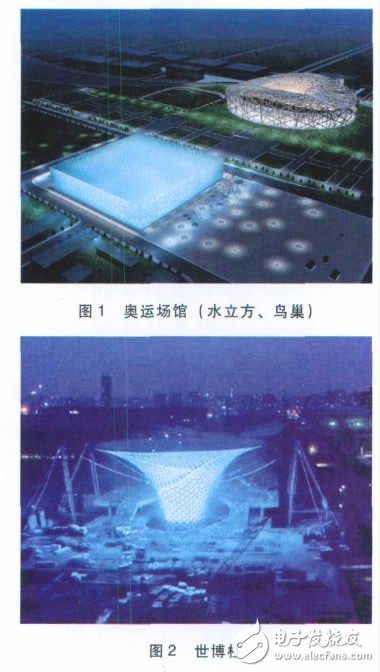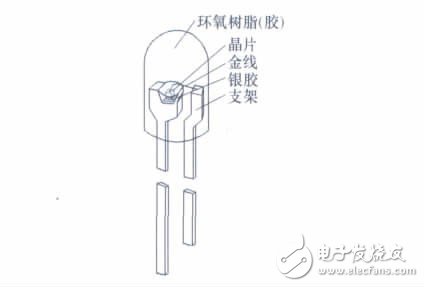Discussion on the design process of intelligent LED lighting system
With the development of LED technology, Internet of Things technology and wireless communication technology, LED lighting particles have gradually developed to commercialization due to their advantages of no pollution, long life, good directivity and easy transportation. Due to the uneven development of China's LED industry and the lack of LED expertise of some relevant engineering personnel, the unreasonable phenomenon of blindly using LED lighting particles and LED lighting system design has emerged. Starting from the principle and characteristics of LED lighting particles, combined with engineering practical experience, the design process and precautions of LED lighting system were discussed, and suggestions for solving corresponding problems were given.
With China's gradual emphasis on semiconductor lighting technology, the National Semiconductor Lighting Industry Project was officially launched in June 2003. In December 2007, the Ministry of Science and Technology and the State Administration of Foreign Experts jointly approved 33 units to establish a national-level international joint research center. It became one of the "National Joint Research Center for Semiconductor Lighting International". Until July 2008, the successful conclusion of the sixth working meeting of the National Semiconductor Lighting Engineering Coordination Leading Group demonstrated that the research and application of semiconductor lighting technology is of great significance for the further implementation of the "National Medium and Long-term Scientific and Technical Development Planning Outline", and at the same time Also pointed out the direction for the development of lighting technology.
On October 12, 2009, six ministries and commissions such as the National Development and Reform Commission, the Ministry of Science and Technology, the Ministry of Industry and Information Technology jointly formulated the Opinions on the Development of the Energy-Saving Semiconductor Lighting Industry, proposing that by 2015, the average annual growth rate of the output value of the semiconductor lighting energy-saving industry will be 30% The market share of products has increased year by year, functional lighting has reached about 20%, and the market share of landscape decoration products has reached more than 70% ". In particular, the application practice of comprehensive perception energy-saving emission reduction control systems such as Internet of Things technology, wireless sensor network technology and smart grid makes the energy-saving intelligent LED lighting control system applied to smart buildings, smart appliances and traffic lighting. The 29th Olympic Games in Beijing in 2008 and the 2010 Shanghai World Expo will make a perfect interpretation of the development of the LED industry, as shown in Figures 1 and 2. The number of LED street lights in China was 600,000 in 2008, and it is expected to grow rapidly to 5 million in 2011, with a compound annual growth rate of 102.7%. It is estimated that by 2013, the average annual compound growth rate of the LED market in China ’s LED lighting market for street lights will reach 38.8%, and the average annual compound growth rate of the LED market for landscape lighting will reach 21.7%.

1. The principle and characteristics of LED lighting particles
LED, or Light Emitting Diode, is a solid-state semiconductor device that can directly convert electricity into light. The core structure of the LED is a semiconductor chip. One end of the chip is attached to the bracket, one end is the negative electrode, and the other end is connected to the positive electrode of the power supply. The entire chip is encapsulated with epoxy resin (adhesive).

Figure 3 LED structure diagram
The LED structure is shown in Figure 3. The basic structure includes: epoxy resin, wafer, gold wire, silver glue and bracket. The role of epoxy resin is to protect the internal structure of the LED. Adding different materials or shaping the shape can change the color, brightness and angle of the LED light-emitting diode. The chip is the main material of LED. The semiconductor chip is composed of two parts: one part is P-type semiconductor, in which holes are dominant; the other part is N-type semiconductor, which is mainly electrons.
When these two semiconductors are connected, a "PN junction" is formed between them. When electric current acts on the chip through the wire, the electrons will be pushed to the P region, where the electrons recombine with holes, and then emit energy in the form of photons, and the wavelength of light is the color of the light. Determined by the material that forms the "PN junction". The gold wire in the LED is used to connect the wafer pad (PAD) and the bracket and make it conductive; the silver glue serves to fix the wafer and conduct electricity; the bracket is formed by plating the bracket material.
The advantages of LEDs over traditional light sources such as incandescent lamps and fluorescent lamps are not only reflected in the quality of light emission, but also greatly improved in terms of their production, manufacturing and ease of use. Compared with the old generation of light-emitting devices, the characteristics of LED are mainly reflected in the following aspects:
1) The LED is made of epoxy resin, and the packaging volume of the components is generally small. There is no need to consider the extraction of the air inside the lamp tube and the injection of inert gas. Therefore, it has good performance in terms of vibration resistance and impact resistance. And installation and other links to provide convenience.
2) LED has high energy concentration, good directivity, concentrated in a small wavelength window, high purity, and much lower brightness attenuation than traditional light sources.
3) The LED device is a solid cold light source. Due to the epoxy resin encapsulation, there is no structure that is easy to loosen inside the lamp body. There are no shortcomings such as filament glowing easily burned and thermal deposition. The general service life is between 50,000 and 100,000 hours, even Frequent switching will not affect the service life.
4) The LED does not add "mercury" during the production process, the waste can be recycled, there is no ultraviolet and infrared in the spectrum, the heat is low and there is no stroboscopic, no radiation, and it can be safely touched.
5) LED response time is very fast, in the microsecond level.
6) LED can be driven by low-voltage DC power supply, ultra-low power consumption (single tube power is 0.03 ~ 1 W), the requirements on the use environment are low.
7) LED can use the principle of three primary colors of red, green and blue. Under the control of computer technology, the three colors have 256 levels of gray and can be mixed arbitrarily to produce 16 777 216 colors, forming a combination of different light colors to achieve richness. Colorful dynamic changing effects and various images.
There are plenty of benefits for using usb type c cable For starters, the port is reversible! But that is only the tip of the cable. And like ice bergs, there is much more than meets the eye in type c cables. They allow for faster transfers, charging, 4K monitor output and more.
Needless to say we will have to start populating our living spaces with USB 3.1 Type C and accessories.It measures in at 1.8 meters of length and can handle USB 2.0 charging, as well as up to 60W of fast charging power. Not bad at all.
USB Type C Cable, USB 3.1 Type C, Type C Cable, USB Type C
Hebei Baisiwei Import&Export Trade Co., LTD. , https://www.baisiweicable.com